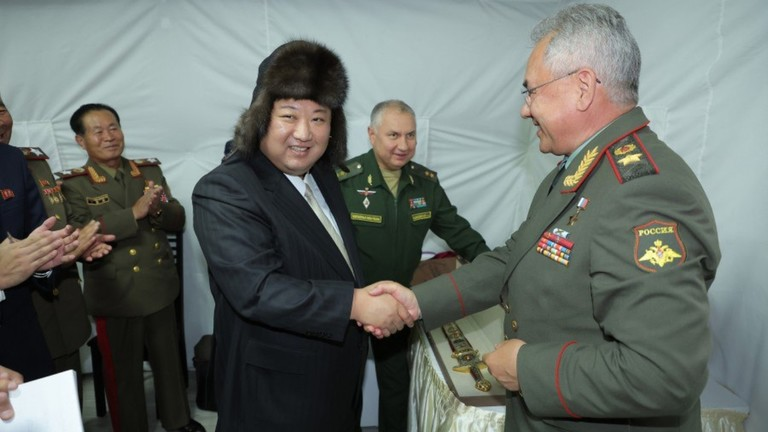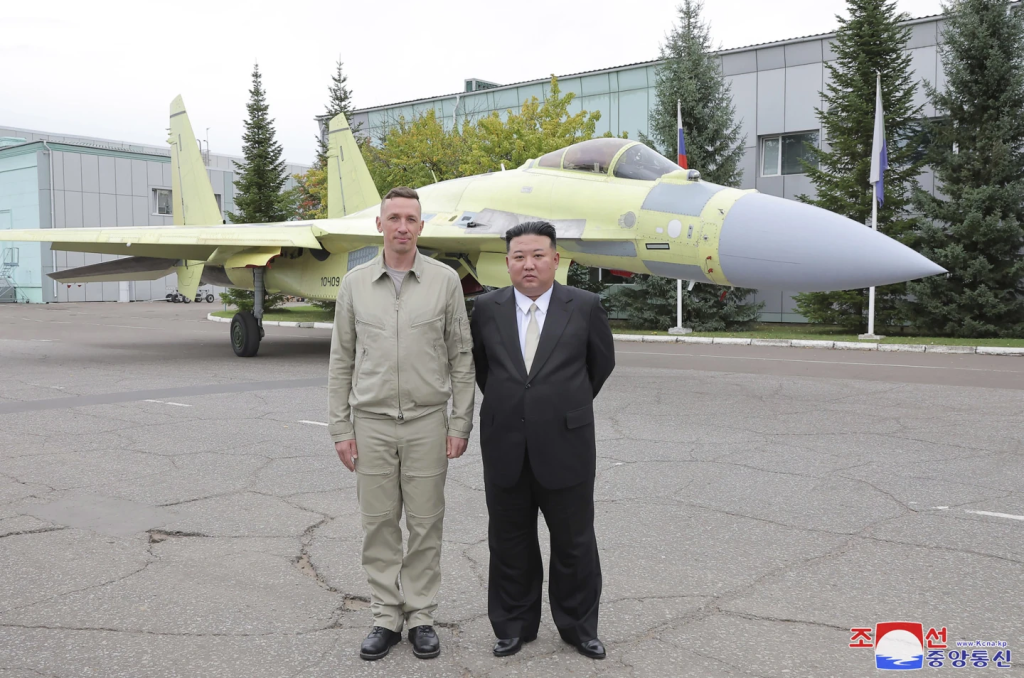As the world continues to deal with an ever-increasing variety of threats in the aftermath of the full-scale invasion of Ukraine by the Russian Federation, the massive losses that the Russian armed forces have taken throughout the conflict have led to an enormous depletion in Russian military hardware. These losses have allowed other actors, such as Iran and North Korea, to step in and bolster their standing with Russia via the supply of weapons.
According to the U.S. State Department, North Korea has stepped forward to provide the Russian military with the weapons and shells they need to allow Russian forces to sustain their fighting ability. According to satellite images, two North Korean arms transfers to the Russian Federation occurred during the current Russo-Ukrainian conflict. The first began in August 2022, with the White House alleging that North Korean arms were transferred to forces of the infamous Russian PMC Wagner; the second occurred in October, with up to 73 box cars sitting on the border awaiting transit between North Korea and Russia.
While the exact contents of these transports are unknown due to the fact that these containers were covered. However, based on the high-level meetings between military leaders and heads of state that occurred before and after these deliveries were photographed, they are most likely military in purpose. These containers are likely intended to supply Russian military forces in Ukraine.

Besides the transfer of munitions, there have been the concerning bilateral meetings between North Korean and Russian leaders. Russian Defense Minister Sergei Shiogu observed a North Korean military parade in June, overseeing the procession of North Korean troops and missile systems alongside North Korean dictator Kim Jong Un.
Defense Minister Shoigu was later given a tour of an arms expo featuring two drones closely resembling existing U.S. weapons platforms, such as the RQ-4 Global Hawk and MQ-9 Reaper. Kim Jong Un visited the Russian city of Vladivostok, where he was given a guided tour of naval bases and weapons factories supplying the Russian War effort against Ukraine. The North Korean leader would go on to view Russian aircraft on display, such as Tu-160, Tu-95, and Tu-22 bombers, as well as inspect both a MiG-31 armed with an air-launched Kinzhal missile and an Admiral Shaposhnikov frigate.
Besides showing interest in the capabilities of Russian aircraft, the North Koreans have been focused on developing their domestic drone capabilities with the Russians lending assistance. The local government of Russia’s Primorsky Region sent suicide and surveillance drone systems to North Korea as gifts between their two countries during Kim Jong Un’s visit to Vladivostok. North Korean drone systems intruded into the capital of South Korea, Seoul, in late December 2023. South Korea’s Joint Chiefs of Staff stated that up to five drones entered restricted airspace and then returned to North Korea, with the South Korean armed forces unable to stop them. At the time, Yoo Sang-bum, a member of the parliamentary intelligence committee, estimated that North Korea had about 500 unmanned aerial vehicles of 20 different types, including suicide drones, whose prevalence is only likely to increase to a regime that seeks any edge against South Korean and their U.S Allies in light of their effectiveness in Ukraine.

With increased cooperation and tightening ties between North Korea and the Russian Federation, the danger that North Korea poses to the peace and stability of the region has increased dramatically. The days when the United States, China, and Russia could at least present the appearance of a united front regarding the threat of North Korean nuclear weapons have long passed. The United States and its allies are now faced with a North Korean regime with the backing and support of Russia and China. While still under international sanctions, China and Russia’s backing serves as a way for the North Koreans to skirt these sanctions to provide funding and resources to increase their conventional and strategic capabilities.
The North Koreans have continued to showcase the development of their ground-based nuclear weapon systems via demonstrations of new missile systems and launch platforms. They are trying to increase the survivability of their nuclear deterrent by creating a seaborne nuclear threat via sub-launched ballistic missiles. These efforts were exemplified in the launch of the submarine Hero Kim Kun Ok, which appears to be a modified Romeo class submarine where there were heavy modifications to the submarine’s hull so that mounting an SLBM would be possible. The submarine was unveiled on September 6th to much fanfare in North Korean domestic media, including a speech by Kim Jong Un himself.

As Russo-North Korean cooperation increases, continued meetings of Russian leaders such as Foreign Minister Sergey Lavrov, who visited North Korea on the 18th and 19th of October to meet with his North Korean counterparts. The flow of arms from North Korea into Russia serves as a means for the North Koreans to secure ties and ensure regime backing by the Russian Federation. The region faces a North Korean regime that could potentially reverse the technological and material deficit the North Korean military has accrued since the end of the Cold War. While they will not be able to overcome the massive technical and military advantages that the South Koreans and their allies have against North Korea. It can still use its limited advances to ensure regime survival via deterrence via the threat of first strikes if the North Korean regime feels backed into a corner. It is likely that North Koreans will attempt to convince the Russians to provide much-needed technological and military support to serve as a counterbalance to U.S. influence in the region.
North Korea has recently attempted to launch satellites that can surveil South Korea and U.S. forces in the region. Russian technological expertise may allow the North Korean regime to advance its ability to conduct more successful launches, at least in theory. Currently, the North Korean regime seems content in advancing its capabilities to maintain the survival of the regime. However, as the region continues to face an ever more aggressive China, North Korea may provide a way for Russia and China to force the United States and their allies to redirect forces and effort in dealing with the North Korean threat. At the same time, North Koreans, in the past, have refused to bend to the will of their would-be allies, such as they did during the Cold War. All that can be said is that the developments on the Korean Peninsula will continue to become more complex and dangerous as the international situation deteriorates.
